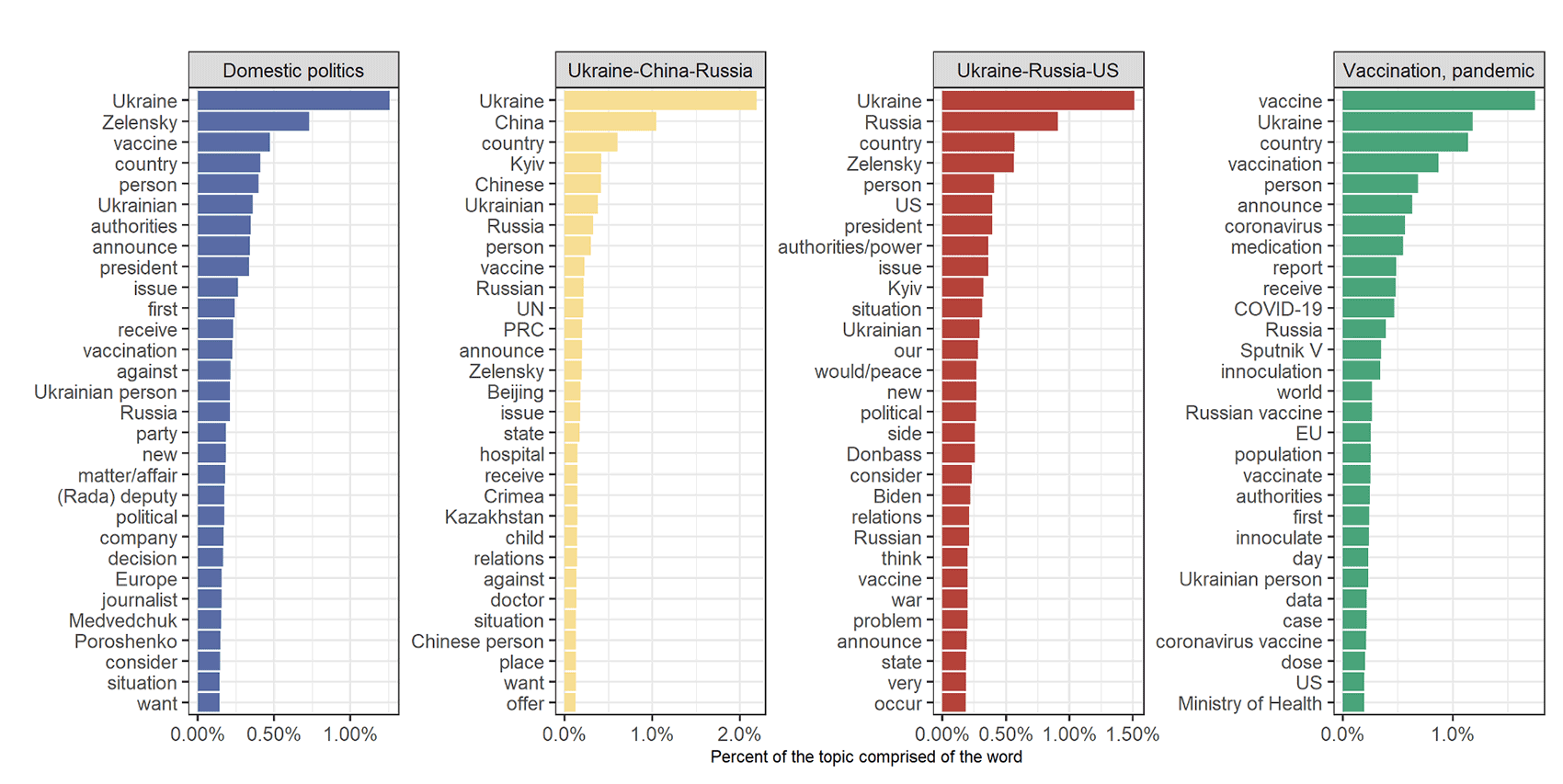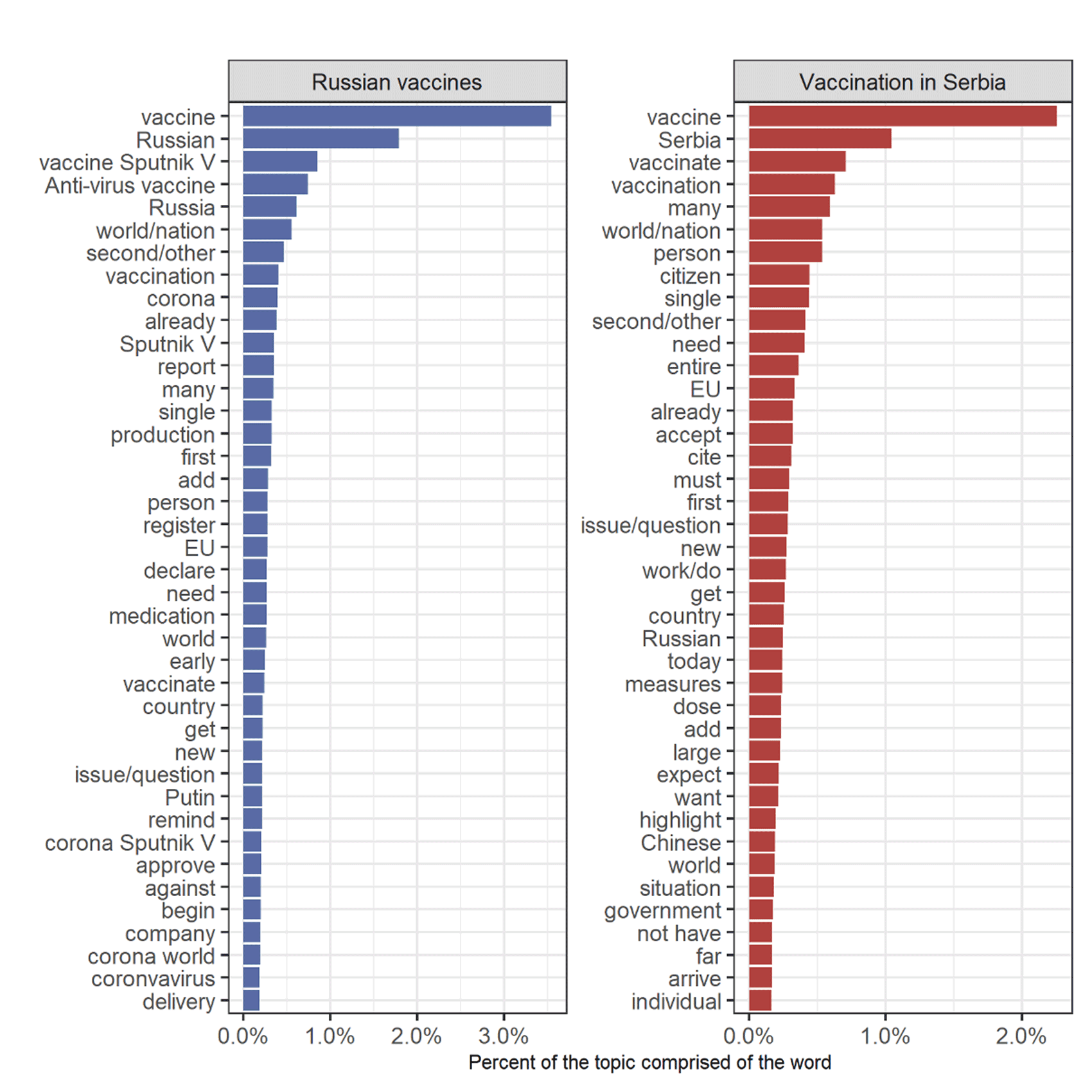People often think about Russian propaganda narratives like they are dog breeds. Their general anatomy does not change, but their colors, textures, temperaments, sizes, and other characteristics can diverge or blend into mutts to suit people with all kinds of views. This is how we conceptualize the Kremlin’s “firehose of falsehood,” which produces many contradictory narratives that can appeal to different audiences. But what if the target audience is not a “dog person” at all?
My research in the HKS Misinformation Review on Russian narratives about COVID-19 vaccines shows that the Kremlin targets entirely different species of narratives, not just breeds, at its foreign audiences based on whether they are majority hostile or friendly. Ukraine served as an example of the former, and Serbia the latter. Using web scrapers built in Python, I collected the text of all articles containing the word vaccine on the Russian state-owned websites Ukraina.ru and Sputnik Serbia, which target Ukraine and Serbia respectively, from December 2020 to November 2021. I then used R to apply LDA topic modeling, which groups words into topics based on the frequency with which they occur in the same article. I also qualitatively analyzed a random sample of the articles.
Vaccine coverage in Ukraina.ru: Most frequently used words by topic

Vaccine coverage in Ukraina.ru incorporated a wide range of topics related to domestic and international politics. Words translated from Russian.
In Ukraine, the Kremlin’s propaganda was like a dog show: diverse and chaotic. Vaccines made their way into articles on everything from censorship to the conflict in the Donbas. The coverage of some topics, like China and the quality of Astra-Zeneca vaccines, was contradictory. In Serbia, the structure of propaganda was completely different. Like domestic shorthairs in a cat café, narratives closely resembled each other. They covered just two topics narrowly related to vaccines – the Russian vaccine Sputnik V and the vaccination campaign in Serbia – in a calm, positive way. In a hostile context, the Kremlin benefits from confusion and polarization, whereas in a friendly context, it is better for them to reinforce the status quo.
Vaccine coverage in Sputnik Serbia: Most frequently used words by topic

Vaccine coverage in Sputnik Serbia was limited to just two topics: the Russian vaccine Sputnik V, including its effectiveness and global distribution, and the vaccination campaign in Serbia. Words translated from Serbian.
Those who want to counter Kremlin propaganda must use structurally different approaches in different audience spaces.
This means that those who want to counter Kremlin propaganda must also use structurally different approaches in different audience spaces. In places where the public is largely pro-Russia, nuanced narratives that put an issue in context would likely be effective. However, when the public is mainly anti-Russia, the opposite approach is needed: clear, simple, and consistent narratives that keep unrelated issues separate. Journalists and public officials can employ these strategies proactively, even before any specific narrative emerges on a topic.
The topic of the day, of course, is no longer COVID-19, but Russia’s war against Ukraine. This research suggests Kremlin messaging about the war directed at friendly audiences, like China, would be more straightforward and repetitive, whereas its narratives directed at hostile audiences, like the E.U. or Ukraine itself, would be more complex and contradictory. Further research is needed to confirm that these findings are applicable in a broader range of contexts, as no other study has used a friend-foe framework to compare foreign propaganda narratives on the same topic.
However, we have already seen that simplicity and clarity help counter Russian propaganda in hostile contexts, as this research suggests. Ukrainian President Volodymyr Zelensky’s concise, consistent, and direct messaging style has been wildly effective at uniting both the Ukrainian people and allies abroad. As a result, the Kremlin’s attempts to sow confusion in Ukraine, including brutal takeovers of local media, a deep fake of Zelensky, and disinformation posing as fact-checking, have all failed. This is a success story for the fight against disinformation, but it is not necessarily a model that will work in all contexts. To pick the right umbrella, you first must determine if the messages raining down are cats or dogs.






